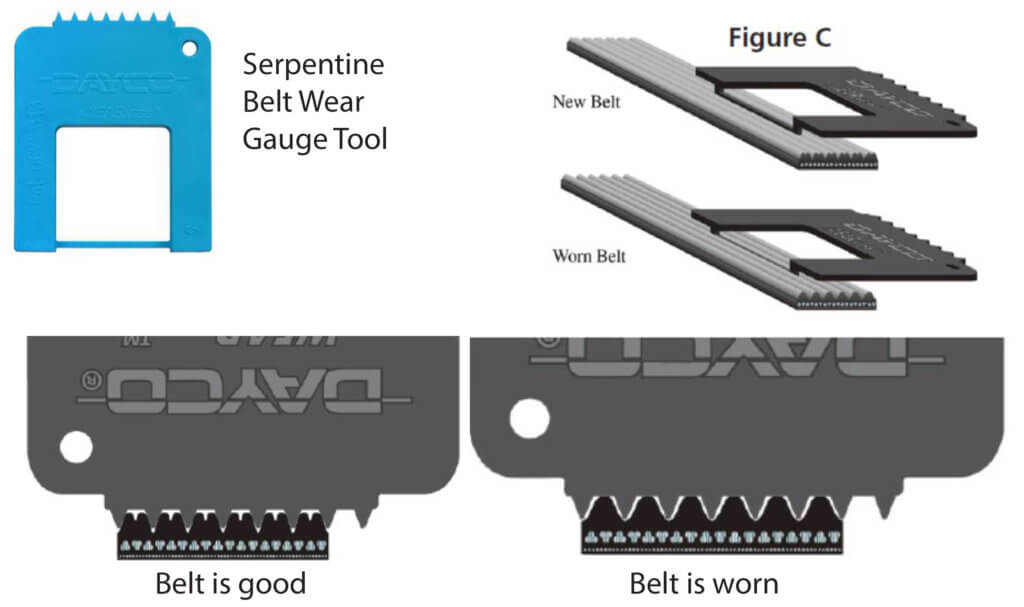When to replace a serpentine belt – time or miles?
Replace a serpentine belt at 80,000 to 100,000 miles even if it doesn’t have cracks
Prior to the 2000 model year, all engines were equipped with a neoprene serpentine or V belt. Neoprene is susceptible to aging from heat, contamination, and ozone. The aging causes the neoprene to crack. Back then the guidelines said to replace a mullti-ribbed serpentive belt if it had more than X number of cracks across a 1-inch section of ribs. But carmakers switched to EPDM belts in the early 2000’s because it lasts so much longer. EPDM serpentine belts have an average life of about 100,000 miles. So you should replace a serpentine belt as it reaches that age. EPDM doesn’t crack like the older neoprene, so stop thinking it’s good if it isn’t cracked
Serpentine belts wear and you have to use a wear gauge to detect the wear
Obtain a belt wear gauge tool
Insert the toothed portion into the ribs of the belt. If you can see light between the ribs and the tool, the ribs have worn down beyond serviceable limits and the belt backing is riding on the pulley ribs. The belt is worn and must be replaced.
Or, lay the V shaped bar of the gauge into a groove between two ribs. If the bar stands above the groove, the belt is good. If the bar sinks into the groove so you can no longer feel it with your fingers, the belt is worn past its limits.
Replace the belt and the auto belt tensioner at the same time
Belt tensioners wear at about the same rate as the belt. They’re designed to be replaced as a set. If you replace the belt but reuse the old tensioner, you’ll wear out the new belt faster due to lower tension, which causes belt slipping and misalignment.
 ©, 2022 Rick Muscoplat
©, 2022 Rick Muscoplat
Posted on by Rick Muscoplat
